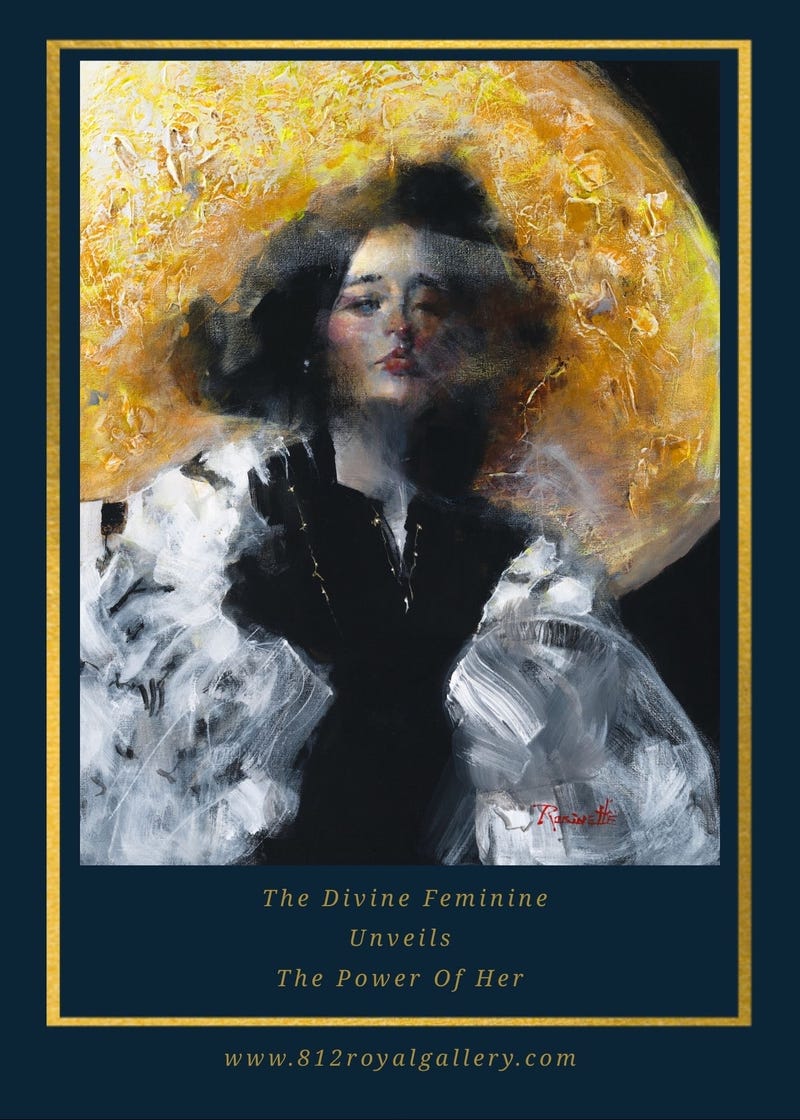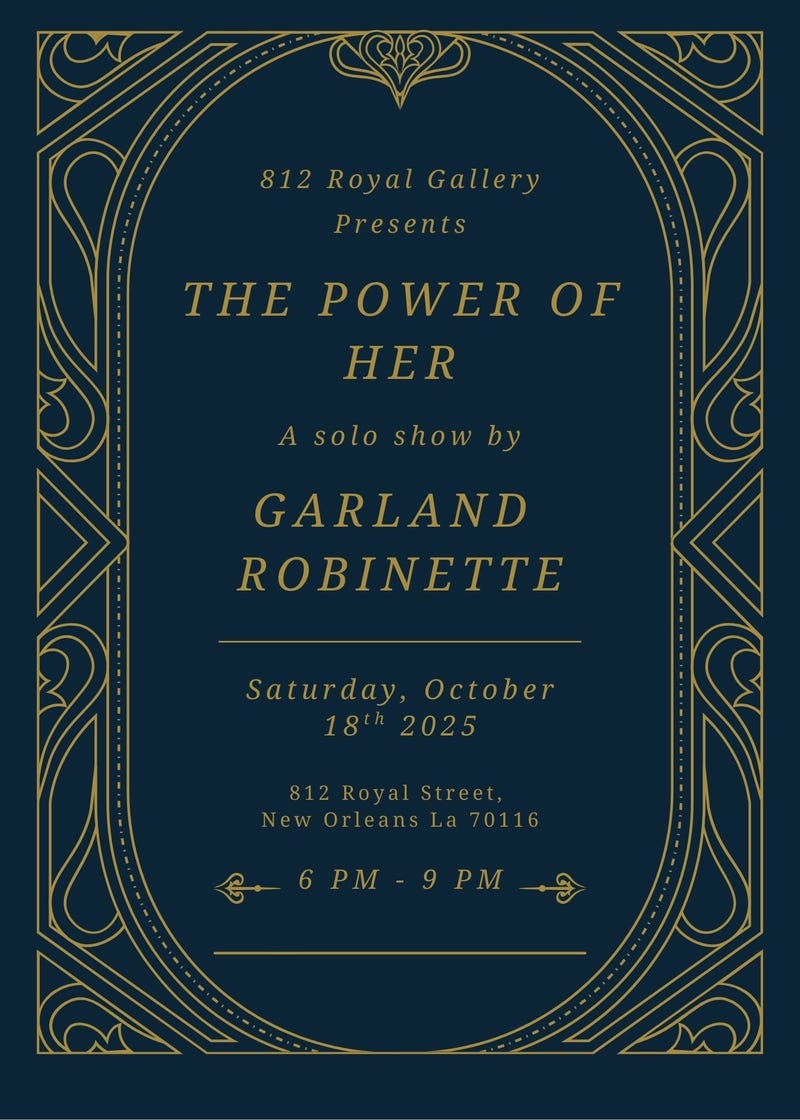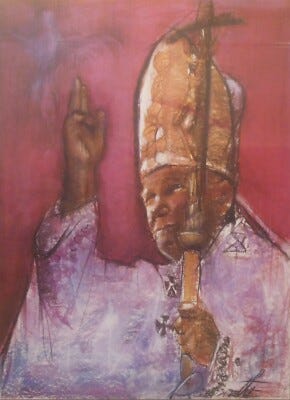
These days, former WWL Radio host Garland Robinette spends a good deal of his time either pacing about art studios between brush strokes or ruminating on the impending AI revolution.
But Thursday, Robinette found himself back in WWL studios with his one-time protégé, Tommy Tucker.
“I covered Aceh, Indonesia, when they had a tsunami. I remember the survivors telling me it was so curious that the water receded. We walked way out, and then we got bored and walked back in,” Robinette tells Tommy Tucker. “To me, AI is like a tsunami. Right now, the water's going out. There are those who are noticing, but it's not a big thing. When it comes, it's gonna come in one big swoop… 2027 is when everything is gonna change overnight.”
Robinette predicts that AI, in the way nuclear technology restructured global power dynamics during the 20th century, will be the next phenomenon to cause seismic shifts amongst the world's superpowers.
“If we don't get the main countries that are doing it together to say, ‘There will be no winners’ … the first country to get artificial super-intelligence will rule the world because regenerative AI will take over,” Robinette continues. “Russia and China, they can’t afford for us to rule the world. When superintelligence takes over bomb codes, blockchain, and crypto, all that gets broken into because the intelligence will get in all of it. It’s an interesting time.”
...
In the studio alongside Garland Robinette were his wife, Nancy Rhett, and the owner of 812 Royal Gallery, Kyla Bernberg. Together, they discuss his upcoming art show on Saturday, October 18th, from 6-9 pm at Bernberg’s gallery in the French Quarter.
The exhibit is titled The Power of Her.

Robinette explains how the showcase is a tribute to the women who have had a powerful impact on his life.
“I call it The Power of Her for a multiplicity of reasons. Number one, my wife. Then Kyla... But you and I remember two women," Robinette tells Tucker, "Helen Centanni and Diane Newman. Without them, WWL Radio wouldn't exist... I wanted to do a show that’s nothing but women. Put up a blank canvas, put on Tchaikovsky, and just let it come to me through the music.”
Robinette credits his success to the immaculate eye of his wife, who discusses her role in assisting and critiquing her husband as he paints.
“I think Garland is the best painter when he’s just in his body and he’s not thinking. He’s a very physical painter," Rhett explains. "He walks and paces; he doesn’t sit and paint. I think he kind of goes through a portal to another place. But if he lingers in that thinking process too long, he can overwork it. So more often it's me telling him to stop rather than give him a critique… I think Garland is an emotional painter because he’s an emotional man. I like to help him channel that.”
Bernberg, who owns the gallery that displays Robinette's work, explains what initially drew her to his unique style.
“Garland’s work definitely has an essence,” states Bernberg. “There’s a spirit that comes through all of his figures and characters, through the palette and the strokes, and it comes alive and evokes a lot of energy. And I feel like, in a way, it’s not necessarily on this plane.”
Bernberg expresses how it's her job as a gallery owner to preserve that essence through working with artists and relieving them from administrative burdens.
“An artist should just be an artist. They shouldn’t be a salesperson because the second they start thinking about their art as a commodity, it changes the outcome, it changes the essence of what art is and what it should be,” explains Bernberg.
...
Robinette recalls how his journey into the visual arts started after he conned his way into a job as a gopher at WWL-TV. Then, after an anchor got drunk on air on Christmas Eve, Robinette filled that role temporarily. A month later, they brought him on full-time.
Nervous he'd be discovered as a fraud, Robinette sketched frantically on the edges of his TV scripts.
“In the margins of the script, I would scribble the floor crew. I really just tried to do a face or do a body. And one day, the floor crew director, a young guy at Loyola, came to me and said, ‘I hope you don't get angry. I pulled all your scripts out of the garbage over the last year. If you let me Xerox them and sell them, I'll pay for my books and I'll give you half.’
"If you can sell that crap," Robinette recalls telling him, "you go ahead and keep them.”
A few months later, the head priest of Loyola (who owned the TV station) invited Robinette out to dinner.
“Oh my God. Somebody told him I'm a janitor. He's gonna fire me,” Robinette recalls thinking.
The priest explained how he’d seen his sketches spread around campus. Instead of firing him, he asked if he’d like to do a portrait.
"I've never thought about that, but you want me to try?" Garland remembered asking. "He said, ‘Yeah, let's try it if it doesn't work, nothing gained, nothing lost.’ And I said, Who is it?”
“Pope John Paul," the priest replied.

"I spent three days at the seminary doing his portrait… all of a sudden I had offers from everywhere to do portraits, and within a year I was doing twenty-thousand-dollar portraits.”
Now Robinette returns to the town where his artistic pursuits began. And he explains where he feels that impulse to pick up the brush again and again comes from.
“Kyla and I were just talking. She's been through trauma; she's an artist. Nancy's been through trauma; she's an artist. I certainly spent time in a little place called Vietnam, and came back very damaged. You always hear comedians are being funny because they want to cry. And I think music, art, and comedy come from some place of pain... But most of what I do, although she discounts it, I give to Nancy.”
